-
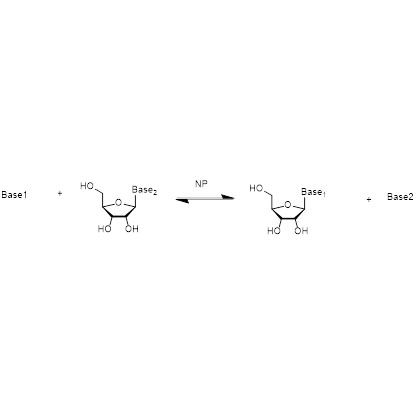
Nucloside phosphoryalse (NP)
About nucleoside phosphoryalse
There are 3 kinds of NP enzyme products (Number as ES-NP-101~ ES-NP-103) developed by SyncoZymes. ES-NP-101 is purine nucleoside phosphorylase, ES-NP-102 and ES-NP-103 are pyrimidine nucleoside phosphorylase. Nucleosidephosphorylase could decompose nucleosides into bases and pentose phosphate. Nucleoside phosphorylase can be divided into purine nucleoside phosphorylase and pyrimidine nucleoside phosphorylase according to the preference of nucleoside bases. Purine nucleoside phosphorylase can metabolize adenosine to adenine, inosine to hypoxanthine, guanosine to guanine, and produce ribose phosphate at the same time. Pyrimidine nucleoside phosphorylase can metabolize uridine to uracil and produce ribose phosphate.
Mobile/Wechat/WhatsApp: +86-13681683526
E-Mail: lchen@syncozymes.com
-
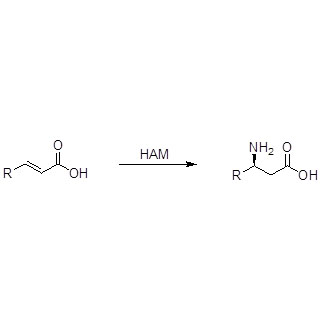
Hydroaminase (HAM)
About Hydroaminase
There are 2 kinds of HAM enzyme product (Number as ES-HAM-101~ ES-HAM-102) developed by SyncoZymes. HAM can catalyze the ammoniation of enoic acid or its derivatives to produce chiral amino acids. HAM can be used to synthesize chiral amino acids (or chiral amines) from enoic acids (or alkenes). Ammonia donor, such as ammonia water or ammonium salt, is necessary.
Hydroaminase catalytic reaction type

Mobile/Wechat/WhatsApp: +86-13681683526
E-Mail: lchen@syncozymes.com
-
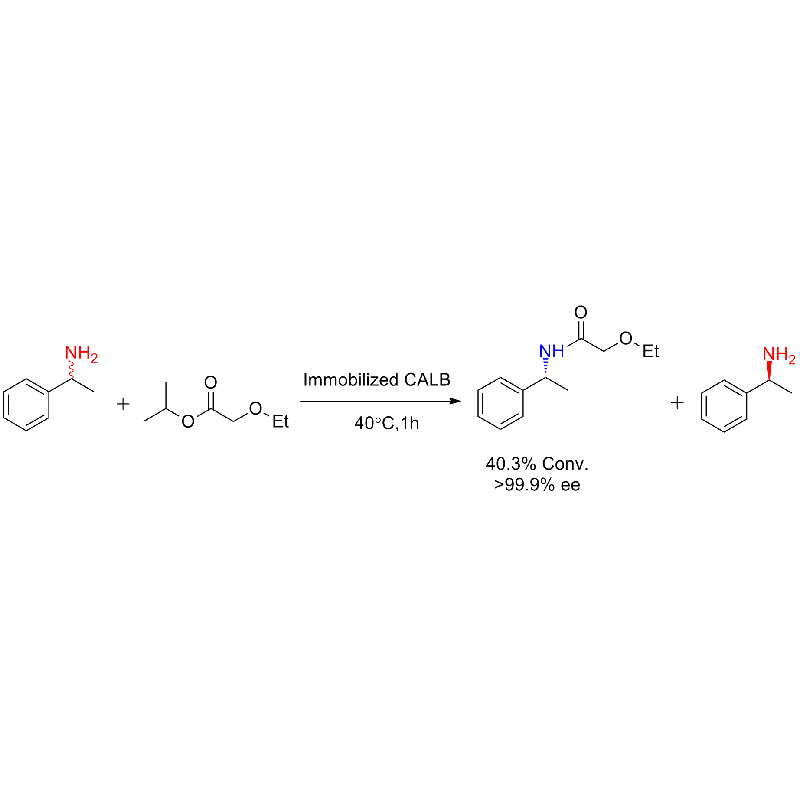
Immobilized CALB
CALB
Recombinant Lipase B from Candida antarctica (CALB) is produced by submerged fermentation with genetically modified Pichia pastoris.
CALB can be used in the water phase or organic phase catalytic esterification, esterolysis, transesterification, ring opening polyester synthesis, aminolysis, hydrolysis of amides, acylation of amines and addition reaction.
CALB is with high chiral selectivity and position selectivity, so it can be widely used in oil processing, food, medicine, cosmetic and other chemical industries.
Mobile/Wechat/WhatsApp: +86-13681683526
E-Mail: lchen@syncozymes.com
-
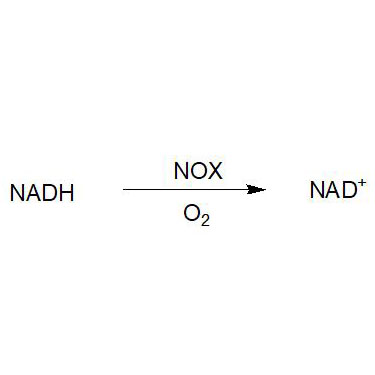
NADH oxidase (NOX)
About NADH oxidase
ES-NOX (NADH oxidase): NOX catalyze the oxidation of NADH to NAD+, and belongs to oxidoreductase. In the process of oxidation, O2 is necessary as oxidant, and reduced to H2O or H2O2. There are 4 kinds of NOX enzyme products (ES-NOX-101~ES-NOX-104) developed by our company, which can be used for the oxidation regeneration of coenzyme NAD+.
Catalytic reaction type:

or

Mobile/Wechat/WhatsApp: +86-13681683526
E-Mail: lchen@syncozymes.com
-
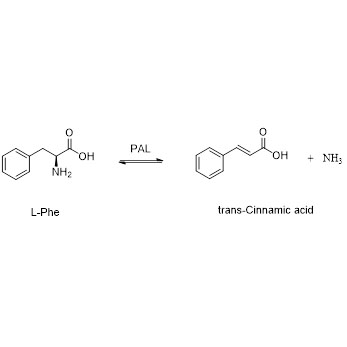
Phenylalanine ammonia lyase (PAL)
About Phenylalanine ammonia lyase
ES-PAL: A class of enzymes that catalyze the direct deamination of L-phenylalanine to trans- cinnamic acid. Syncozymes developed 10 items of phenylalanine ammonia lyase (numbered ES-PAL-101~ES-PAL-110), which can be used in deamination or reverse reaction of phenylalanine and its derivatives.
Catalytic reaction type:

Mobile/Wechat/WhatsApp: +86-13681683526
E-Mail: lchen@syncozymes.com
-
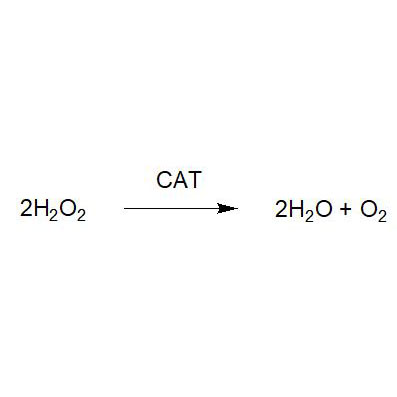
Catalase (CAT)
About Catalase
ES-CAT (Catalase): catalyzes the decomposition of H2O2 into oxygen and water. It mainly exists in mitochondria, endoplasmic reticulum, animal liver and red blood cells, especially in the liver at high concentration, providing antioxidant defense function for the body. In biocatalysis, it is mainly used to remove the reaction by-product hydrogen peroxide and reduce the inhibition and inactivation of enzyme by hydrogen peroxide. There is only 1 kind of CAT enzyme products developed by SyncoZymes (Number as ES-CAT).
Catalytic reaction type:

Mobile/Wechat/WhatsApp: +86-13681683526
E-Mail: lchen@syncozymes.com
-
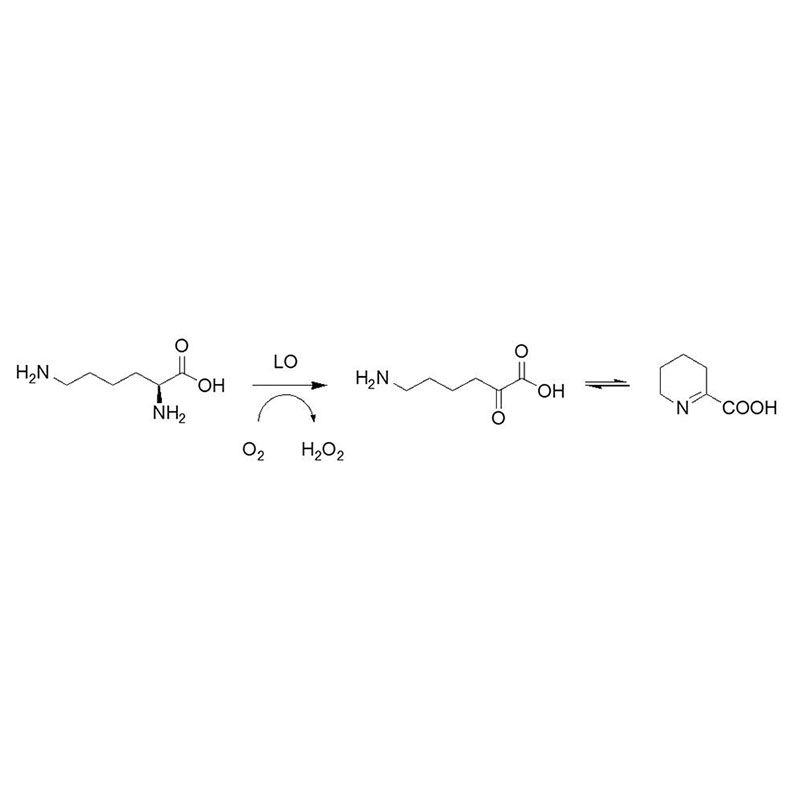
Lysine oxidase (LO)
About Lysine oxidase
ES-LO (Lysine oxidase): catalyzes the oxidation of L-lysine to 6-amino-2-oxohexanoic acid (or its lactone). There is only 1 kind of LO enzyme product (Number as ES-LO) developed by SyncoZymes.
Catalytic reaction type:

Mobile/Wechat/WhatsApp: +86-13681683526
E-Mail: lchen@syncozymes.com
-
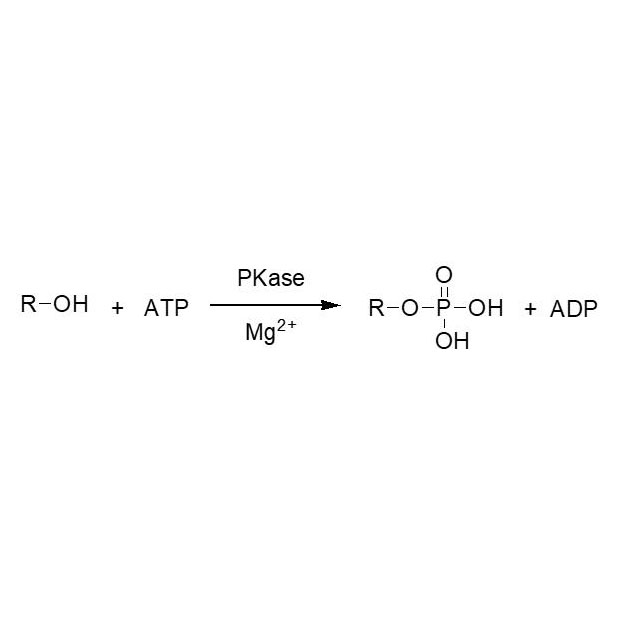
Phosphokinase (PKase)
About Phosphokinase
ES-PKase (Phosphokinase): catalyzes the transfer of phosphate groups on ATP to other compounds. It also catalyzes the transfer of phosphate groups on other nucleosides of triphosphate sometimes. Most kinases need divalent metal ions to participate in the reaction (generally Mg2+). There are 21 kinds of PKase enzyme products (Number as ES-PKase101~ ES-PKase-121) developed by SyncoZymes.
Catalytic reaction type:
Mobile/Wechat/WhatsApp: +86-13681683526
E-Mail: lchen@syncozymes.com
-
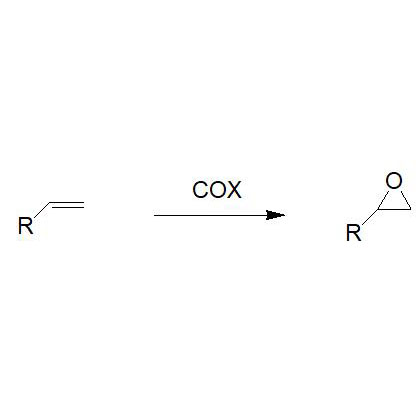
Cyclooxygenase (COX)
About Cyclooxygenase
ES-COX (Cyclooxygenase): catalyzes the conversion of C=C bonds to epoxide. There are 11 kinds of COX enzyme products (Number as ES-COX101~ ES-COX-111) developed by SyncoZymes. According to different catalytic mechanism, the COX of SyncoZymes is divided into haloperoxidase and styrene monooxygenase. ES-COX101, 102, 107-111 belong to haloperoxidase, while ES-COX103-106 belong to styrene monooxygenase.
Mobile/Wechat/WhatsApp: +86-13681683526
E-Mail: lchen@syncozymes.com
-
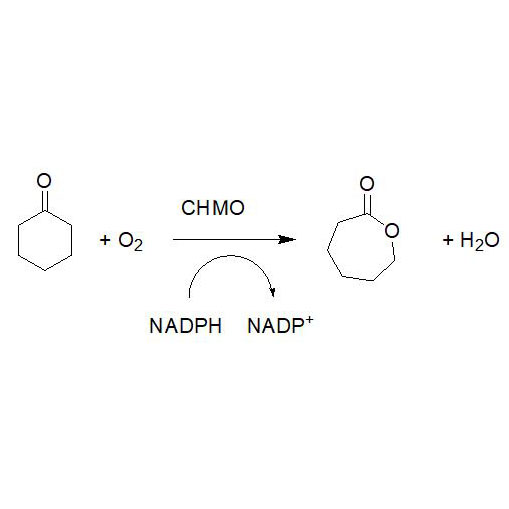
Cyclohexanone monooxygenase (CHMO)
About Cyclohexanone monooxygenase
ES-CHMO (Cyclohexanone monooxygenase): a Baeyer Villiger monooxygenase (BVMO) with cyclohexanone as the substrate, can oxidize cyclohexanone to cyclohexanol using oxygen.
It is a kind of flavin dependent enzyme. The oxidized flavin is reduced to flavin through the cycle of reducing coenzyme II (NADPH) for the next oxidation. Therefore, cofactor NADPH is necessary in flavin cycle. There is only 1 kind of CHMO enzyme product (Number as ES-CHMO101) developed by SyncoZymes, which can be used to oxidize cyclohexanone to cyclohexanone.
Catalytic reaction type:
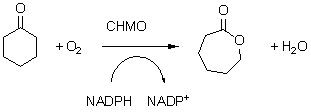
Mobile/Wechat/WhatsApp: +86-13681683526
E-Mail: lchen@syncozymes.com
-
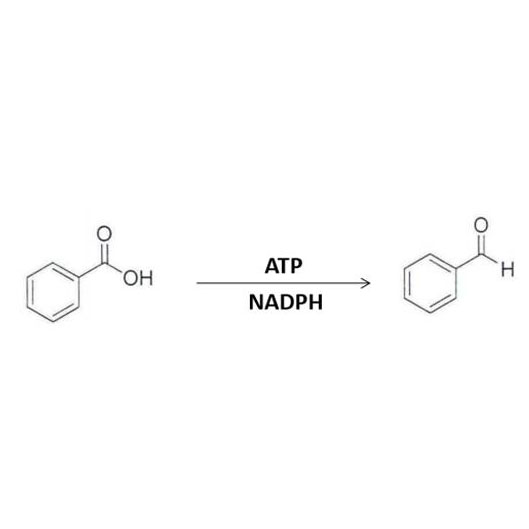
Carboxylic acid reductase (CAR)
About Carboxylic acid reductase
ES-CAR (Carboxylic acid reductase): catalyzes the reduction of carboxyl group to aldehyde group. In the catalytic process, ATP activation and coenzyme NADPH are required as hydrogen transporters. There are 2 kinds of CAR enzyme products (Number as ES-CAR101~ ES-CAR-102) developed by SyncoZymes.
Catalytic reaction type:

Mobile/Wechat/WhatsApp: +86-13681683526
E-Mail: lchen@syncozymes.com
-
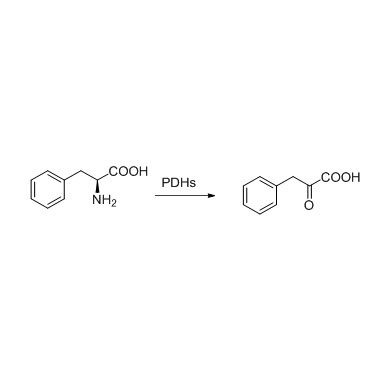
Phenylalanine dehydrogenase (PDH)
About Phenylalanine dehydrogenase
ES-PDH: A class of oxidoreductase. The positive reaction can catalyze the oxidative deamination of L phenylalanine salt in the presence of NAD to produce phenylpyruvate salt, and the reverse reaction can catalyze the synthesis of corresponding amino acid salt from phenylpyruvate salt. Syncozymes developed 8 items of phenylalanine dehydrogenase (numbered ES-PDH-101~ES-PDH-108). ES-PDH can be used to prepare phenylalanine salt or corresponding amino acid salt from phenylpyruvic acid salt or derivatives.
Catalytic reaction type:
Mobile/Wechat/WhatsApp: +86-13681683526
E-Mail: lchen@syncozymes.com

